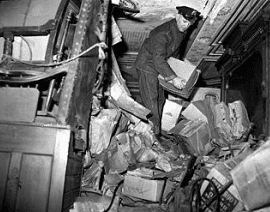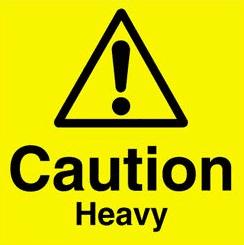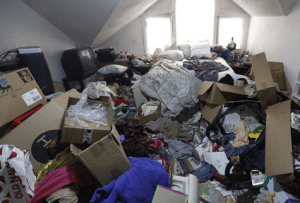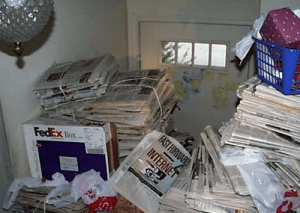Searching and locating victims inside a house fire can be challenging process that will physically drain your firefighters in minutes. Most firefighter chooses a type of search pattern to start with and can adjust when the search has encountered difficulty. Hoarding conditions is a difficulty that will need adjusted for when a search is to be performed. Compulsive hoarding disorder will cause a person to overload their homes with things that have no apparent value to you and I, what rooms do they start their collections in?
[caption id="attachment_324" align="alignright" width="120"]
 Hoarder Fire 4/2013
Hoarder Fire 4/2013While not an absolute truth, many people that suffer from compulsive hoarding disorder begin their collections in attic spaces and basements. Once full of belongings their collection will spill into the living spaces such as living rooms and bedrooms. This compulsive collecting makes the living spaces that are usable become limit. How should you adjust you searching once the heavy content discovery has been made? Let’s review some complications faced when searching for trapped victims.
Collapsed belongings
A recent news story of a compulsive hoarder that was reported missing for days just to be discovered days later drives home the need for an intense focus when searching. Collapsing belongings can cover up victims and trap searching firefighters. Compulsive hoarding disorder can attribute to a number of belongings being collected, from piles of newspapers to car parts a firefighter needs to anticipate finding various types of collections behind the doors of a hoarded home. A few common types of belongings often collected are newspapers, DVD cases, and magazines will be stacked from floor a possible ceiling level. Each of these stacks individually will not offer many challenges but put them all in the same small space and the chance for debris falling as a occupant tries to self extricated from the house can cover them, easily.
Where to start searching
Many hoarder conditions have rooms filled to capacity and often the last to rooms to be filled are the bathroom and kitchen. While this may seem like a useless finding, it may offer you a starting point of your search not usually thought of. If a fire were to happen at 0200 in a residential neighborhood most firefighters would begin in the bedroom area. In hoarded environments the bedroom may not be used for sleeping. When sizing up a heavy content environment determining the locations and the levels of hoarding is important. If the smoke conditions allow this the bedrooms should be assessed transmit findings to all firefighters on scene.
If the bedrooms assessment tends to show an unusable space your search will need to begin in the spaces that are usable Starting a search in the kitchen or bathrooms may be where you will find an occupant. This is especially true if the occupant is alerted to the fire and tries to escape. It has been documented that firefighters have made successful rescues from these two areas.

One problem with starting your search inside a kitchen or bathroom is the access to them. Often these rooms can have limited access from the outside. This means that you will have to battle your way through a area that could potentially be hoarded beyond use. Using tactics from the exterior will offer the firefighters a barrier of safety but if you choose to go through the “goat paths” you will need to make an extra effort to stay oriented, increase crew size, and be prepared to deal with the collapsing piles of debris.
Final thoughts
If you are alerted to people trapped in a Hoarder Fire you should take notice that they may be covered by their own belongings. Adjusting your search patterns, moving the piles, and sweeping under stacks of belongings are all successful tactics to use when searching in the hoarded environment. All of these tasks should be conducted under the direction of an interior officer and assisted with the use of a Thermal Imagine Camera. Sweeping the area with a TIC can help you see any abnormal stacks of stuff that could be hiding a victim.
In your next search drill add some different variables to it like stacks of belongings and obstacles to search under in case you are tasked with searching in a hoarded environment to make sure we all go home.
Here are some links to the New Jersey Case http://www.northjersey.com/news/Sad_story_of_New_Milford_womans_death_puts_spotlight_on_disorder_of_hoarding.html
http://www.nydailynews.com/news/national/partly-mummified-woman-found-n-apt-article-1.1317931

























